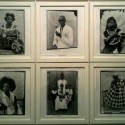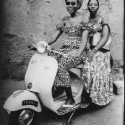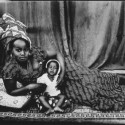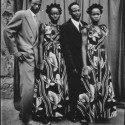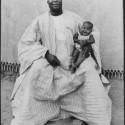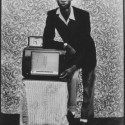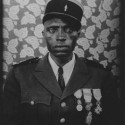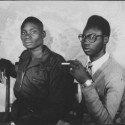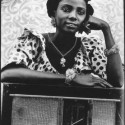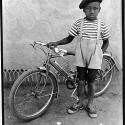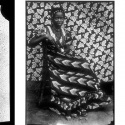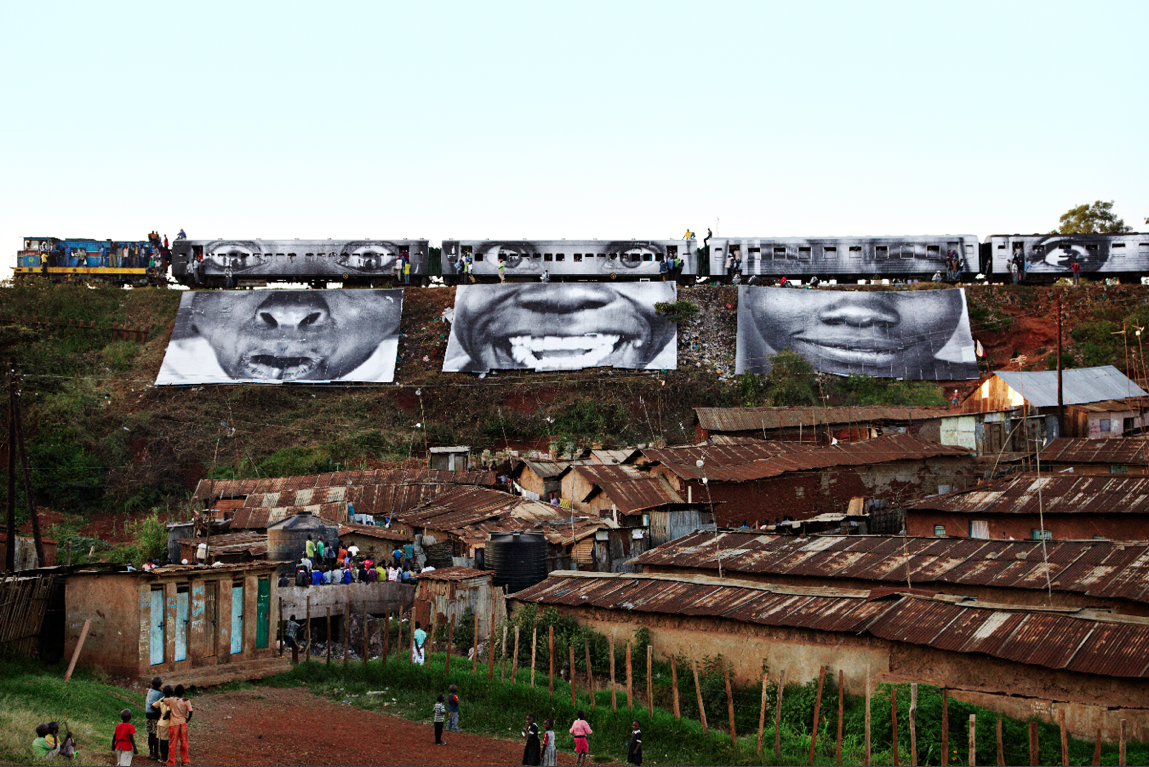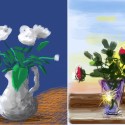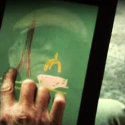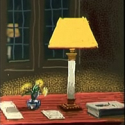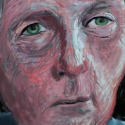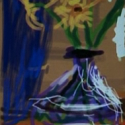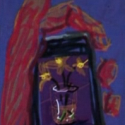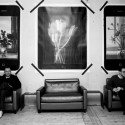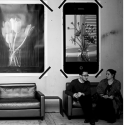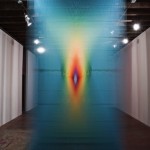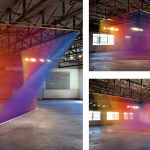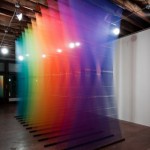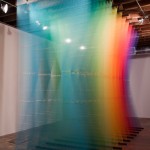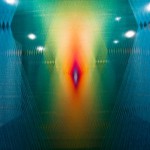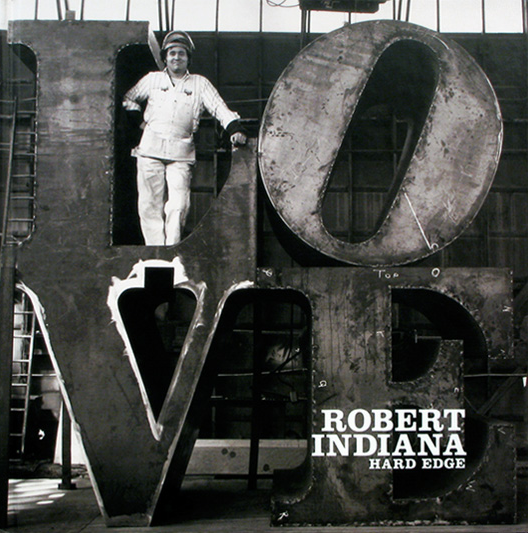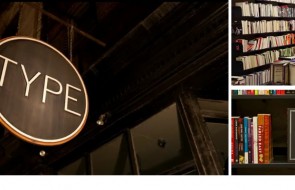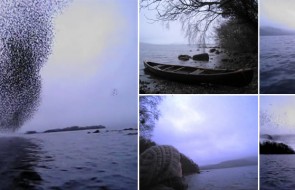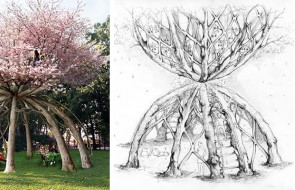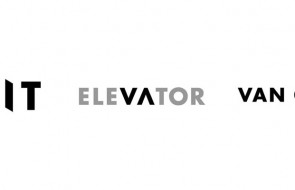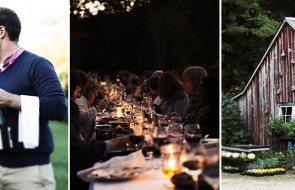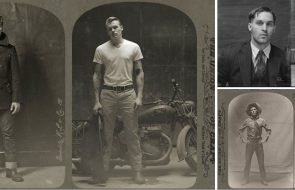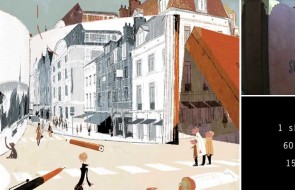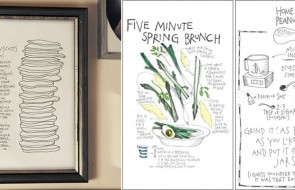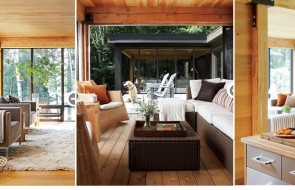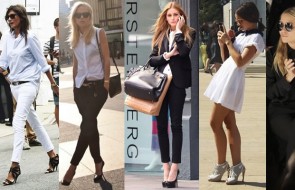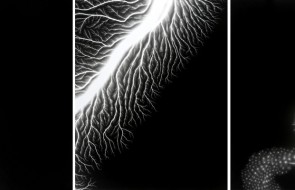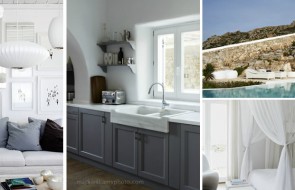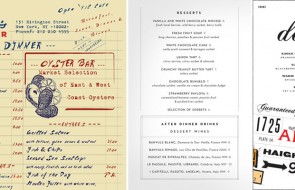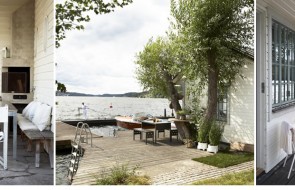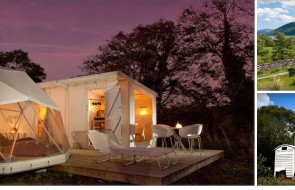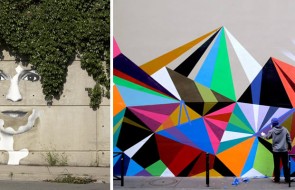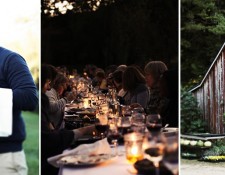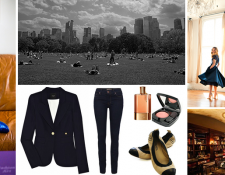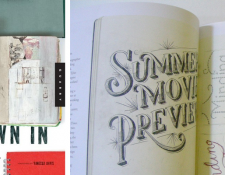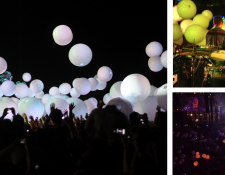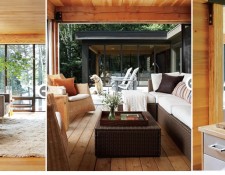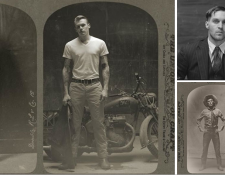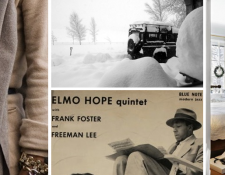Arts Visuels
Seydou Keita
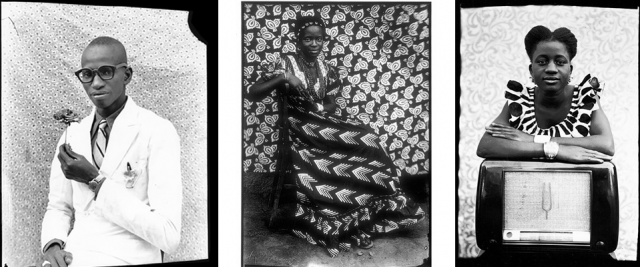
Last month at Art Basel Miami, one of my very favorite exhibitions was the work of Malian photographer Seydou Keita. At first I was simply aesthetically taken in, and then I found out the history of Keita and was totally hooked.
First, a brief background on Keita’s work itself. Keita, originally trained as a carpenter, set up a portrait studio in 1948 to take photos for people to send to their relatives. This was common during this period in Mali, as many were leaving their families in the country and moving to the city, where they would then send back photos of themselves.
What is significant about this is that it means that Keita’s photographs were not actually made as art, but rather as commercial prints, which one might never guess upon first inspection, since the images are so rich and carefully composed. With their display of beautiful textiles, they are highly reminiscent of Matisse’s work, which often featured patterned textiles (Matisse’s family were weavers and he collected textiles) in both the foreground and background.
Even more interesting is that Keita was operating in a complete vacuum as far as art historical or photographic education, meaning that his bold compositions and use of textiles could not have been influenced by the likes of Matisse, or anyone else for that matter. In fact, Keita has said that his original backdrop for the photos was simply his bedspread.
However, despite his lack of training and the fact that he made portraits to make money (rather than as “art for art’s sake”), his photos perfectly capture a remarkable time in Mali’s history as it went from French-ruled to independent and Malians were finding and forming their identity as formerly French-ruled Africans with a newfound exposure to the West. Keita’s subjects are seen alternately in traditional dress and Western-style suits proudly presenting stock props Keita provided including radios and plastic flowers.
Now, for the juicy story of how Keita’s work became known to the world. In the 1960s, after becoming modestly successful as a portrait artist, the newly independent national regime asked Keita to work for the government. He refused, and when a general showed up at his studio to intimidate him, he buried his 7,000+ negatives in a metal box in his backyard before going to work for the government.
His portraits remained entirely internationally unknown until the 1990s, when a French photojournalist visited Mali and discovered his work and they quickly came to the attention of Jean Pigozzi (recently featured in Vanity Fair for his extravagant bachelor lifestyle and art collection), who began to have them printed from the negatives, shown in galleries, and printed in a book about the artist, which quickly made him the new toast of the African-art-collecting world. The story and controversy goes on, but I’ll leave you with that, and you can read more this NYT article if you’re curious for all the details…
[PS-- If you've been following this blog for a while, and Keita's work looks familiar, you may be remembering the post on contemporary Malian photographer Malick Sidibe. As it turns out, Sidibe was heavily, and undeniably, influenced by Keita, who was working in Bamako from the 1940s through the 1960s-- essentially just one generation ahead of Sidibe.]
Arts Visuels
2011 TED Prize winner: Street Artist JR
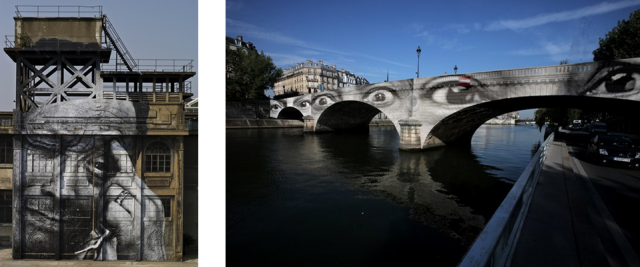
For street artist JR’s work, size matters. So does location. Though his content– portraits of marginalized members of societies the world over– may not be unprecedented, his presentation is, and that changes everything.
Using insanely large-format photographs plastered up on sides of buildings, trains, stairs, bridges, or really any public structure, JR’s work is not only made accessible to the public, it actually confronts the public in an unavoidable way.
What his various projects have in common is that they represent an overlooked or misunderstood group of people– the elderly, women, member of different sides of conflicts, etc. For his 28 Millimeter project, he had residents of a slum outside of Paris (that had recently been in the news for the riots that had started there) act out the stereotypes they knew of themselves, photographed them, and plastered them around a bourgeois neighborhood of Paris along with the subjects’ name, phone numbers, and building numbers– effectively emphasizing that they are real individuals, not homogeneous representatives of a stereotype.
For his Face2Face project, he photographed residents living on either side of the wall dividing Israel and Palestine, basically making silly faces and looking utterly, universally human, and posted them on the opposite side of their respective sides of the wall. As he explains in the video below, he expected hostile reactions, but amazingly, he received none.
Check out the two videos below for more info and more installations. The first is the video posted by TED, and the second is about his upcoming film, “Women are Heroes.”
Arts Visuels
“Bridge”
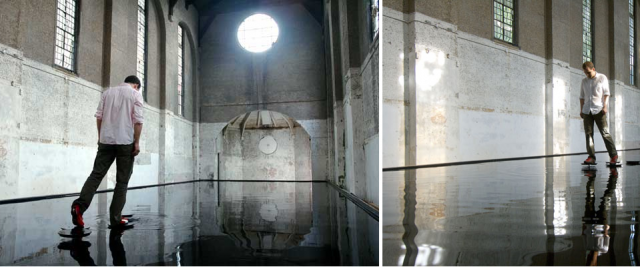
Michael Cross’s meditative, yet playful, installation, “Bridge,” an abandoned church filled with 5ft of water and mechanical, “magically appearing” stepping stones, is like Alice in Wonderland-meets-a dream state-meets-those lily pad pools at water theme parks.
As you approach the water, one stepping stone emerges from the water in front of you, and another one doesn’t appear until you’ve stepped on the first one. The water is only five feet deep, so it’s not like you can drown, but that’s still deep enough to get totally soaked if you fall in! (The guy in the pictures looks so casual about it, like the stepping stones are just in a shallow puddle, but it’s five feet!).
Hence the water theme park reference– remember those pools at water parks with the shaky “lily pads” on springs that you would try to walk across? So I imagine it would actually be sort of stressful to get across, and yet also like some sort of zen-meditation exercise. The space certainly is beautiful and the whole experience must feel rather like you’ve fallen down the rabbit hole.
Check out the video below for what it actually looks like walking across it. About a third of the way through the video, the angle switches from first-person to panoramic so you see the whole space. Pretty beautiful.
Arts Visuels
David Hockney’s New Exhibit of i-Paintings
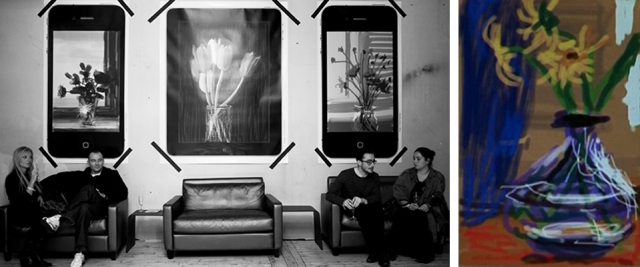
David Hockney, easily the most likable grand old man of the art world, has a new exhibition in Paris. An exhibition displayed on, and created on, iPhones and iPads! He started this project by experimenting with the Brushes app for the iPhone by drawing the flowers on his bedside table or the view of the sunrise from his bed in the morning, and then he would email them out to friends.
Now on view at the Fondation Pierre Berge-Yves Saint Laurent, the exhibit, as Hockney said, is the first ever exhibition to be emailed to the gallery. (The banner image above is not the exhibit– that’s an image from the opening party at Tokyo Art Club in Paris.) The gallery installed 30 iPhones and 30 iPads, and over 300 images rotate across the screens, with new images being added at will as Hockney creates more. Also remarkable is that the screens sometimes show the evolution of the images, so the viewer sees not only the final product, but also the various stages of creation! This all thrills me.
I am fairly obsessed with this whole concept for a number of reasons. It so interestingly calls into question many of the age-old art issues– seeing the artist’s “hand” in the work (it is literally finger-painting, and yet there is no tangible evidence of human-involvement, like globs of paint on a canvas), how the artist can make money (how do you sell these?), the monetary value of a piece of art (if there is no way to prove an “original,” and it’s endlessly reproduce-able…), how to display the art (do you print it out? or does it always live on a screen?)…
And, on top of that, I love the fact that he’s used new media to execute a traditional style. Most art I see that employs new media seems to be trying too hard to be avant-garde, and I find it exhausting. It’s overly conceptual and underly aesthetic. Here, Hockney simply sketches as he would with pencil and paper, but he has upgraded to the latest media available.
There’s a great video, where you see how the exhibit is done, as well as how he creates the works, at the Fondation website here. Unfortunately it was un-embeddable so you’ll have to click over to see it. The video in German below at least gives you a preview (I don’t know why but there are 0 good videos in English about this exhibit). Also an excellent NPR interview here.
Arts Visuels
The Seed Cathedral
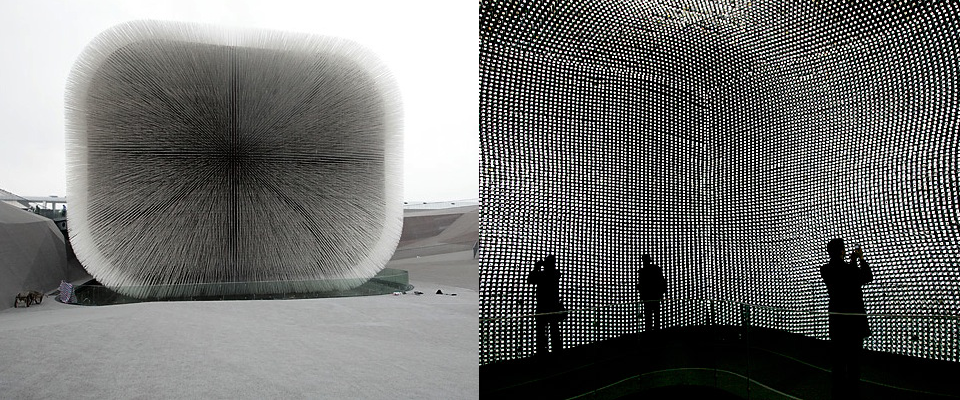
Have you see this? The Seed Cathedral? I just came back across it after it was named one of the top 50 inventions of 2010 by Time Magazine, and it is indeed pretty amazing. The “cathedral,” designed by architect Thomas Heatherwick, was Britain’s contribution to the Shanghai World Expo, which had a theme of “Better City, Better Life.”
Its facade is constructed from 60,000 fiber optic rods, which filter light into the interior in the day time and radiate light outward at night. During the day, this light illuminates the different seeds at the end of each of the 60,000 rods. The seeds were provided by Millenium Seedbank project, which has an aim of collecting the seeds of 25% of the world’s species by 2020, and after the building is taken apart, the rods are going to be distributed to schools around China and the UK as a legacy of the project.
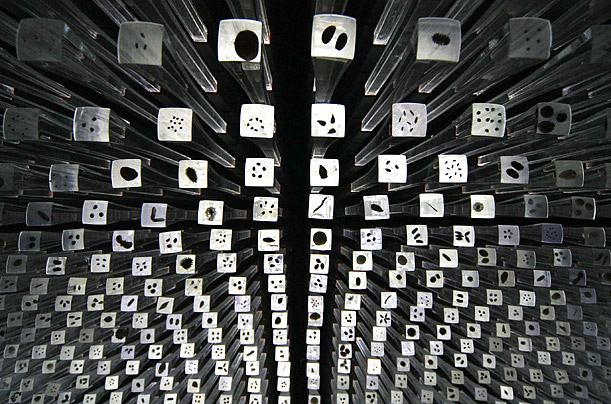
The rods are also able to sway gently in the breeze, making the entire building look like a giant dandelion. The video below shows this, as well as really cool views of the interior of the space all lit up. It’s pretty amazing!
For more info on the mission of the project and its construction, go here.
Arts Visuels
Gabriel Dawe
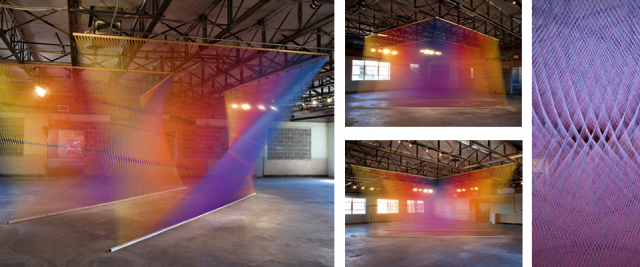
I seem to have a thing for prismatic installations made from unexpected materials. Remember these tape installations by Rebecca Ward? And the twine installations by Ball-Nogues Studio? Well, they were all cool, and I still have room to be totally enamored with yet another kaleidoscope creation– this time made from thread by Gabriel Dawe. I love the way these change depending on the angle from which they’re viewed.
From HUH. Magazine:
“After becoming bored and frustrated by the restraints imposed upon him by his graphic design course, Gabriel Dawemoved from his hometown of Mexico City to Montreal, Canada, and began creating artwork using techniques that were considered women’s work by many of Mexico City’s inhabitants. Inspired by the creations of Anish Kapoorand Victor Vasarely, Dawe’s work developed into huge, viewer absorbing installations made from thousands upon thousands of different colour threads and taking up to 140 hours and four to five weeks to create.
While many of the big tapestries and rugs are made by men in Mexico City, the thread used in Dawe’s pieces are usually used on the smaller, less physically challenging looms that are operated by women. By using these materials for a piece which physically exhausts Dawe, the installation subverts traditional constructs and challenges Mexico City’s machismo culture. “I enjoy the endurance aspect of my work, the obsessiveness and repetition” says Dawe, and is he the same in his day to day life? “I’m definitely a perfectionist, but I’m not very organised in my day to day life. I’m kind of a mess, actually. [Laughs]“”
[via]
Arts Visuels
New Anish Kapoor: Turning the World Upside Down
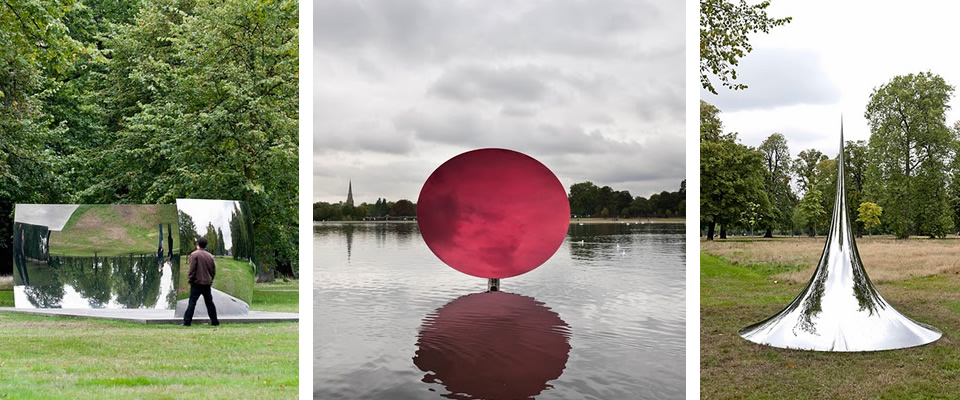
Anish Kapoor’s new installation at Kensington Gardens, on view through March 13th.
Check out the video to see the effect on the pieces of the clouds moving across the sky… the photos don’t capture the fact that the pieces are always in flux due to the ever-changing sky.
Arts Visuels
Baptiste Masse
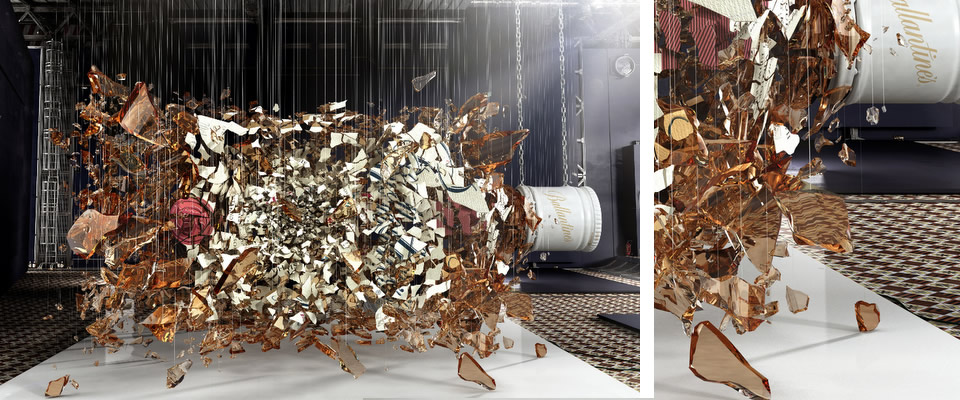
I know. I can’t believe it either.
A “smash hit,” no? Ah, what an awful pun, but I couldn’t resist.
By Baptiste Masse.
Arts Visuels
Jacques Henri Latrigue
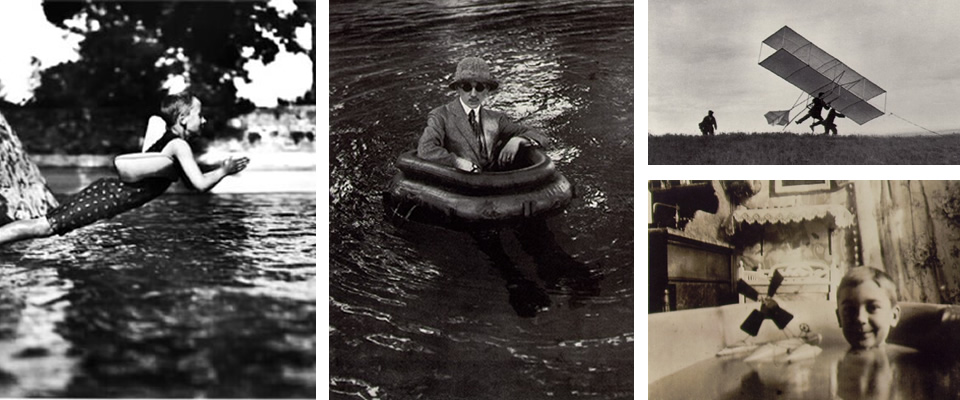
I am totally enamored with Jacques Henri Lartigue and his work. Born in 1894, he received a camera for his seventh birthday, and from then on essentially kept a photo diary of his life. Fascinated by the things most young boys are interested in, including cars, dogs, his family and friends at play, aircraft, many of his most famous photographs were taken during his childhood.
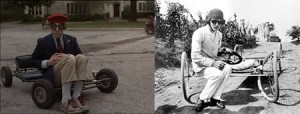 Apparently, Wes Anderson is a big fan and has modeled many of his characters and images after Lartigue’s work, including Max from Rushmore. Also did you notice the photo of Zissou? Bet that’s where he got Steve Zissou’s name!
Apparently, Wes Anderson is a big fan and has modeled many of his characters and images after Lartigue’s work, including Max from Rushmore. Also did you notice the photo of Zissou? Bet that’s where he got Steve Zissou’s name!
As he continued to document his surroundings and outings for his entire life, he later took many photos of fashionable Parisian life and French vacation spots, but I’ll save that era for another day.
Today, I’m loving the joie de vivre, humor, and idiosyncrasies captured in his childhood photographs.
Can you believe his technical capability at such a young age? This was before digital made everything look good, y’all.
Arts Visuels
Classics: Robert Indiana
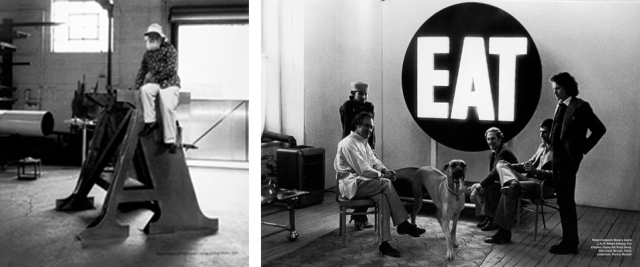
Love these iconic photos from the catalog for the Robert Indiana show at Paul Kasmin Gallery in 2008.

